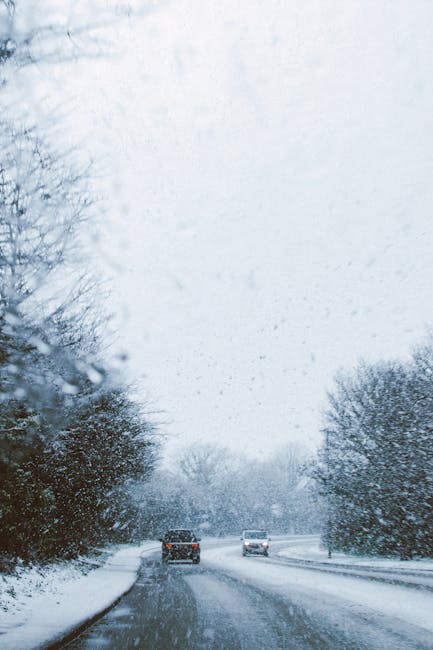
How to Detect Flood-Damaged Cars Before Buying
How to Detect Flood-Damaged Cars Before Buying
Purchasing a used car can be a great way to save money, but it also comes with risks—especially if the vehicle has been damaged by flooding. Flood-damaged cars often suffer from hidden electrical, mechanical, and structural issues that may not be immediately apparent. To avoid costly repairs and safety hazards, it’s crucial to know how to identify a flood-damaged car before making a purchase.
In this comprehensive guide, we’ll walk you through the key signs of flood damage, how to inspect a vehicle thoroughly, and what steps to take to ensure you’re making a safe and informed decision.
Why Flood-Damaged Cars Are a Major Risk
Floodwater can wreak havoc on a vehicle, causing long-term damage that may not surface until months or even years later. Some of the most common problems include:
- Electrical system failures – Water can corrode wiring, leading to malfunctioning lights, power windows, and even engine control modules.
- Engine and transmission damage – Water entering the engine or transmission can cause severe internal corrosion, leading to costly repairs.
- Mold and mildew growth – Damp interiors create a breeding ground for mold, which can cause health issues and unpleasant odors.
- Rust and corrosion – Floodwater accelerates rust in the undercarriage, frame, and other critical components, weakening the car’s structural integrity.
Unfortunately, some unscrupulous sellers try to hide flood damage by cleaning and reselling affected vehicles without disclosing their history. This makes it essential for buyers to perform a thorough inspection.
Key Signs of a Flood-Damaged Car
1. Check the Vehicle History Report
Before even inspecting the car in person, obtain a vehicle history report from services like Carfax or AutoCheck. These reports often include flood damage records if the car was declared a total loss by an insurance company. Look for terms like:
- “Salvage title”
- “Flood damage”
- “Water damage”
However, not all flood-damaged cars are reported, so a clean history doesn’t guarantee the car is safe.
2. Inspect the Interior for Water Damage
Floodwater leaves behind telltale signs inside the car. Look for:
- Musty or mildew odors – A strong, damp smell is a red flag.
- Stained or discolored upholstery – Watermarks on seats, carpets, or door panels indicate past flooding.
- Warped or swollen dashboard/trim – Moisture can cause wood or plastic components to warp.
- Rusty seat bolts and under-seat areas – Check beneath seats and carpets for rust or sediment deposits.
- Foggy or malfunctioning electronics – Test all buttons, lights, and infotainment systems for erratic behavior.
3. Examine the Exterior and Undercarriage
- Rust in unusual places – While some rust is normal, excessive corrosion on door hinges, trunk latches, or the undercarriage suggests flood exposure.
- Water lines or mud residue – Look for dirt or watermarks in hidden areas like the engine bay, trunk, or inside wheel wells.
- Peeling paint or bubbling – Moisture trapped under paint can cause it to bubble or flake off.
4. Check Under the Hood
- Corrosion on metal parts – Inspect battery terminals, wiring, and engine components for rust or greenish oxidation.
- Water in fluids – Oil or transmission fluid that appears milky or frothy may indicate water contamination.
- Mud or debris in hard-to-reach areas – Check crevices around the engine and air filter for dirt deposits.
5. Test Drive and Listen for Odd Noises
A flood-damaged car may exhibit:
- Squeaky brakes (due to rust)
- Strange electrical glitches (flickering lights, non-functional gauges)
- Engine misfires or stalling (from water-damaged sensors)
If anything feels off during the test drive, walk away.
Additional Steps to Protect Yourself
1. Get a Professional Inspection
If you’re unsure, have a trusted mechanic inspect the car. They can spot hidden issues that you might miss.
2. Beware of Too-Good-to-Be-True Deals
If a car is priced significantly below market value, it could be hiding flood damage. Always investigate before buying.
3. Avoid Buying from Flood-Prone Areas
If a car was previously registered in a region known for hurricanes or floods (e.g., Florida, Texas, Louisiana), be extra cautious.
4. Look for Signs of Fresh Cleaning
A recently shampooed interior or excessive air fresheners may be masking flood damage.
Final Thoughts
Buying a flood-damaged car can lead to endless headaches and expensive repairs. By carefully inspecting the vehicle, checking its history, and consulting a mechanic, you can avoid falling victim to a waterlogged lemon. Always trust your instincts—if something feels wrong, it’s better to walk away than risk a bad investment.
By following these steps, you’ll be well-equipped to make a smart and safe used car purchase. Happy car hunting! 🚗💨







